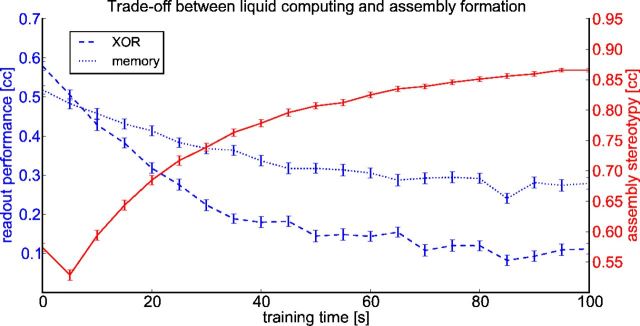Figure 12.
Tradeoff between generic computational capabilities of a network and the formation of assemblies and stereotypical trajectories of network states in response to repeated input patterns. A standard method for testing the generic nonlinear computational capabilities of a network (XOR) task and its (fading) memory for novel spike inputs was applied (see Materials and Methods). The performance of linear readouts trained by linear regression for both tasks were evaluated during test phases after every 5 s of adapting to the spike input pattern from Figure 4. This performance decreased as the network adapted through STDP to the repeated input pattern and formed an assembly with a stereotypical trajectory of network states. The stereotypy of this trajectory was measured by the average correlation between the temporal activity trace of a single neuron in the assembly during two successive pattern presentations (averaged over all neurons in the assembly). All performance values were averaged over 100 runs with different patterns and networks (error bars show SE).

